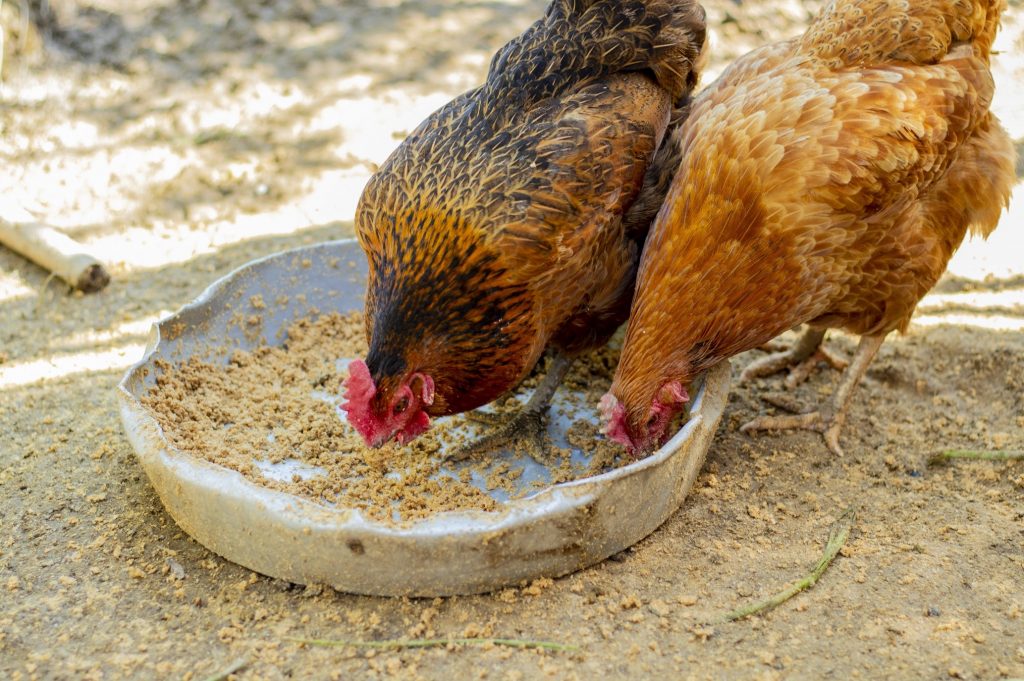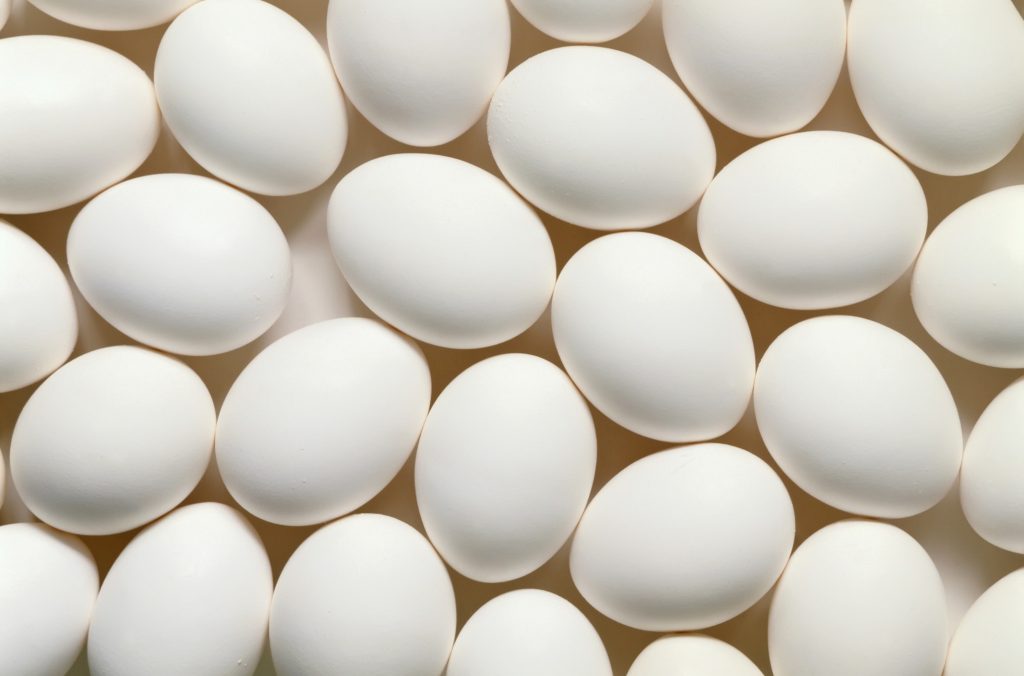Animal nutrition has a direct impact on human health

‘You are what you eat’. This phrase is used to encourage us think hard about our food choices, but what does it really mean? And when we think about what we eat, what is the impact of the nutrition that is provided to the animals that we, as humans, will consume? Is the concept of ‘personalized nutrition’ applicable to animal nutrition, and would it impact human health?
Chickens are the most abundant bird in this planet. Over the years, its production has evolved into an efficient form of farming that plays a vital role in our nutrition, particularly in regards protein supply either in the form of meat or eggs. Hens are able to lay more than 300 eggs in the year (i.e. almost 1 egg per day), with white hens producing white shelled eggs and brown hens laying brown eggs.
As the world’s population increases, the demand for poultry meat and eggs is expected to rise by 121% and 65%, respectively, by year 2050. The need us to think deeper about the phrase ‘you are what you eat’ becomes much more important when we look to the future. Foods of animal origin with enhanced functionality is at the core of research in the animal nutrition industry, all underpinned by the essential responsibility for implementing sustainable solutions.
Modifying animal diets is one way to improve sustainable nutrition
Could chicken become a key source of omega-3 fats?
Consumers are very aware of the recommendations to eat oily fish to sustain dietary omega-3 intake to support normal development and maintenance of optimal health, yet Western populations are failing to comply with the recommendation to consume 2-3 servings of fish per week. Meanwhile, the use of fish oil supplements has increased drastically, putting additional strain on the sustainability of marine resources.
One solution to this problem is to optimize the feed of chickens in order to modify the lipid profile of their meat and eggs. In the past, when fish oil was added into the diet of chickens, it gave the meat a fishy taste. However, science has evolved to cost-effective successful supplementation with flaxseed oil, which results in a high alpha-linolenic acid (omega-3) feed which is naturally metabolised by the animal and deposited in the tissue as omega-3 fatty acids, without any influence on the taste of the meat. In similar fashion, the use of marine algae biomass has shown to be promising strategy to yield omega-3 enriched chicken meat.
In other words, we can introduce more omega-3 fat intake into entire populations just by changing the feed of the chickens that population eats.
Improving egg nutrition
Antioxidants are naturally occurring in the egg yolk, however, eggs can be naturally enriched to increase the level of vitamin E, carotenoids and selenium through the feed that hens receive. Selenium is an essential trace mineral, also supporting thyroid function and immunity, which cannot be produced by the body and therefore humans rely solely on diet to ensure we get enough. However, levels of this nutrient have been declining in diets across populations in UK and other EU countries in recent decades.

Organic selenium (Se) sources, including Se-enriched yeast have been successfully used to increase antioxidant levels in hens, which also increases the amount of selenium the hens deposit in the eggs they produce.
Vitamin D is another nutrient that few people consume enough of. Biofortification of table eggs with this important vitamin is also possible through the enrichment of the feed for laying hens. This enrichment can be a useful approach to enhance vitamin D levels in human populations. All of these feeding strategies are viable and natural routes for the development of so-called ‘designer eggs’, which are an important type of functional food.
The diet provided to dairy cows is also the main factor influencing the content of functional lipids, such as conjugated linoleic acid (CLA), in milk. CLA has the potential to protect against ailments derived of metabolic syndrome. Grass-fed cows are shown to produce more CLA in their milk, and increases in milk CLA content of >2-fold have been obtained by supplementing animals with fish oil and vegetable fats, including rapeseed, soybean, sunflower and linseed oils.
“A good gut feeling” – probiotics and prebiotics are good for animals, too
Consumers are familiar with the concept of taking probiotics and/or prebiotics to influence the digestive health. These strategies are also extensively adopted in animal production to promote animal health and productivity. Promoting a healthy gut in animals can also lead to safer food by reducing the animal risk of contracting salmonellosis and campylobacteriosis, which are primary examples of diseases that can be transferred from animals to humans. The control of these diseases starts in the animal itself by reducing the occurrence of these pathogens in their gut.
The use of probiotic strains, in which live microorganisms confer a health benefit to the host, delivers consistent improvements to the performance of the animal itself. Specific strains of Bacillus and Lactobacillus spp. have been shown to reduce Campylobacter counts in poultry and improved the overall health of pigs challenged with Salmonella.
Prebiotics, on the other hand, are dietary ingredients which can be selectively fermented by the host microbiota causing specific beneficial shifts in its composition. Most prebiotics are fibre-rich compounds of varying composition [e.g. fructo-oligosaccharides (FOS)], which tend to selectively enhance lactobacilli and bifidobacteria populations and reduce the colonization by pathogenic microbes, including Salmonella spp. in the gut of chickens and pigs.
The future of animal science will bring improvements to human nutrition and health
It is in this context that these feeding strategies to design better food and safer food from animal origin, where the concept of personalized nutrition resonates with the animal nutrition industry. Furthermore, when this concept is coupled with that of precision nutrition and the need to define nutrient requirements of producing animals according to its life stage, genetic makeup, growing conditions when sustainability of animal production is optimized. Overall, animal farming is at the forefront of producing healthier food in a responsible manner towards people and planet alike.

Contributor:
-
References
Arsi et al. (2015) The efficacy of selected probiotic and prebiotic combinations in reducing Campylobacter colonization in broiler chickens Journal of Applied Poultry Research 24:327-334.
Brown and Arthur (2001) Selenium, selenoproteins and human health: a review. 4:593-599.
Cashman et al. (2016) Vitamin D deficiency in Europe: pandemic? American Journal of Clinical Nutrition 103:1033-1044.
Ducatelle et al., (2015). A review on prebiotics and probiotics for the control of dysbiosis: present status and future perspectives. Animal 9:43-48.
Duffy et al. (2017). The potential of cholecalciferol and 25-hydroxyvitamin D3 enriched diets in laying hens, to improve egg vitamin D content and antioxidant availability. Innovative Food Science & Emerging Technologies 44:109-116.
Forrest and Stuhldreher (2011) Prevalence and correlated of vitamin D deficiency in US adults. Nutrition Research 31:48-54.
Gaggia et al. (2010) Probiotics and prebiotics in animal feeding for safe food production. International Journal of Food Microbiology 141:S15-S28.
Han et al. (2017). Effect of sodium selenite and selenium yeast on performance, egg quality, antioxidant capacity, and selenium deposition of laying hens. Poultry Science 96:3973-3980.
Kanakri et al. (2017). A reduced cost strategy for enriching chicken meat with omega-3 long chain polyunsaturated fatty acids using dietary flaxseed oil. British Poultry Science 58:283-289.
Siurana and Calsamiglia (2016) A metaanalysis of feeding strategies to increase the content of conjugated linoleic acid (CLA) in dairy cattle milk and the impact on daily human consumption. Animal Feed Science and Technology 217:13-26.
Surai and Sparks (2001). Designer eggs: from improvement of egg composition to functional food. Trends in Food Science and Technology 12:7-16.

 Sara Llamas Moya, MSc, PhD is the Global Scientific Affairs & Applications Manager for Kerry Animal Performance Solutions. She is responsible for conducting clinical efficacy trials in target animal species and creating a scientific understanding of the mode of action of ingredients and technologies, from a nutrition and health perspective.
Sara Llamas Moya, MSc, PhD is the Global Scientific Affairs & Applications Manager for Kerry Animal Performance Solutions. She is responsible for conducting clinical efficacy trials in target animal species and creating a scientific understanding of the mode of action of ingredients and technologies, from a nutrition and health perspective. 

